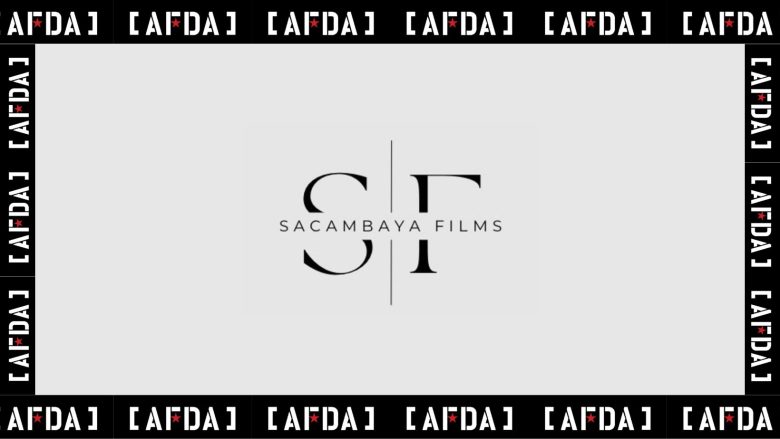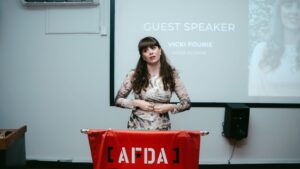According to The Cambridge Dictionary, a scriptwriter is “a person who writes the words for films or radio or television broadcasts.” (Cambridge Dictionary, 2023) While writing for books tends to be an abstract practice, writing for film is known as a practical visual. These two strong opposite tensions then collide and have to co-exist somehow. From the script to the screen itself, a painstaking process needs to happen in between those moments.
Writing books is vastly different from writing screenplays. In books, readers can use their imagination and form their own internal worlds. The reader gets to experience the story from the inside out. While in scriptwriting, the writer has to write in such a way that is visual, and visual only. The scriptwriter’s task is to write only what they can see and/or hear. The audience then gets to experience the world of story from the outside in. They are invited into a world already created, a world already established long before the opening credits roll.
Screenplays are widely recognized as the backbone and the skeleton of any film, television, or stage production. Without a screenplay, the whole story falls apart quickly. Crafting a story for the screen is a rigorous discipline, as it’s all about the visuals and what can be seen. Margaret Stone states that “a screenwriter writes a story specifically designed to be viewed on a screen.” (Margaret Stone, 2023) I tend to agree with her statement. Visuals remain a dominant feature when it comes to films. When writing a script, it’s important to keep this fact in mind. Start with the visual first, then add the extra spices later, such as the dialogue, sound effects, visual cuts, etc.
In scriptwriting, the term “show, don’t tell” is applied much more evident than in books. A good example is to look at The Silent Film Era, which was from 1894 to 1929. These films showcased mediums that had no sound whatsoever. Dialogue words would flash on the screen, and only necessary information was shared with the audience. This is where the term “show, don’t tell” came across strongly; there was almost no room left for imagination from the audience.
The Honours short film for this year is called “Is’Thuthi”, which is a Xhosa word for “transportation.” The motivation for the concept idea for our Short Film for this year’s Honours Class 2024 has been two-fold: a focus on d/Deafness, as well as the South African taxi industry.
Both these topics are relevant to the current economic and social climate we are currently living in. With “Is’Thuthi”, we strived to address both themes in a fresh and original way.
Research has been a valuable and significant part of writing “Is’Thuthi”.According to Craig Batty and Alec McAulay’s research thesis, “screenwriting is an emerging research practice within the academy, whereby the act of writing a screenplay is understood as a form of research.” (Craig Batty and Alec McAulay, n.d.)
Globally, the statistics for d/Deafness are alarming. According to a February 2024 report by the WHO, “by 2050, nearly 2.5 billion people are projected to have some degree of hearing loss, and at least 700 million will require hearing rehabilitation.” (World Health Organization, 2024) Deafness is also “the third most common disability in the world.” (Central, 2023)
Ever since South African Sign Language (SASL) was declared as the twelfth official language in South Africa, people have been taking note of d/Deafness and all it entails. “More than four million people in South Africa are Deaf or Hard of Hearing, and the country is the 14th in the world to include SASL as an official language.” (Payi, 2023) This sum is staggering, especially since South Africa has a population of roughly 64 million people as of 9 August 2024. (Worldometer, 2023) This means that about 5% of South Africans have some degree of deafness.
Likewise, the taxi industry is a booming business. “In 2017, the South African National Taxi Council said there were more than 200 000 minibus taxis doing business in South Africa, with an estimated R90 billion in annual revenue.” (Bridge Taxi Finance, 2021) This means that “about 65% of South Africa’s commuters depend on taxis.” (Bahre, 2014)
“Screenwriting becomes a way of generating and disseminating new knowledge” (Batty and McAulay, n.d.) Doing proper research, and then adapting that information into the storyline of the script is a valuable way of educating the audiences. It is important to research and ask questions from all kinds of angles so that fresh, new characters can be created for the screen. In this way, original storylines can be created as well.
In the case of Themba, the d/Deaf character in our short film, it is important to do a clear background study of his hearing loss and how much he can hear with/without hearing aids. How did he learn sign language? What school did he go to? Is he part of the Deaf community, or did he only grow up in the hearing community? Which province’s sign language does he speak? What is the percentage of hearing conversations that can he follow? How strong are his lipreading skills? Can he lipread? Does he speak like a hearing person, or does he prefer to be mute? All of these points determine the structure of the storyline and the conflicts that arise throughout the film. Then we dive deeper into Themba’s psyche: what are his wants and needs, and how does he go about achieving them?
As for Aphiwe, the taxi driver, it is important to understand who he is as a person before delving into his background in the taxi business. Who is he as a person? What is his relationship with his brother, Themba, like? What are his living circumstances? What are his needs and wants, and how does he go about achieving them? When it comes to his role as a taxi driver, further research needs to be done. Does he have a driver’s license? Is he legally registered to drive a taxi? Is he a safe driver when it comes to driving the streets of Port Elizabeth? Does he have road rage? How did he get into the taxi business?
In Cebisa’s case, what was her upbringing like? Did she have a good father? Where is her mother? What other dreams did she have before taking over the taxi business from her father? What does she think of the taxi business? Is this the world she would’ve chosen for herself? Does she dream of doing something else with her life? Is she passionate about business? What are her wants and needs, and are they being met? What does she think about money and murder?
At the beginning of this year, each of the twelve Honours students at AFDA GQ had the opportunity to pitch their concept ideas. We had numerous meetings and discussions and went back and forth pitching ideas and concepts. Eventually, it was down to two concept ideas: my concept of d/Deafness, which is also linked to my Research Thesis topic, and Speech Tase’s concept of the taxi industry. In the end, my concept idea won, but because this film is meant to be a collaborative effort amongst Honours students, it was decided that we would merge the idea of d/Deafness with the taxi industry. Thus, “Is’Thuthi” was born.
There were several components and elements when it came to writing the script for “Is’Thuthi”.The authentic plot, character development, fresh dialogue, believable setting (the time and place in which the story occurs), and strong structure were essential in creating the world of story.
After we decided on d/Deafness and the taxi industry as the main themes, a week-long script camp followed. I wrote the 10-beat structure for the film, as well as the first draft. As Kouguell so adequately writes, “the spine in a human’s body is what holds the body’s framework together. In a screenplay, the spine holds the script together. Without a strong spine, the body and the screenplay collapse.”(Susan Kouguell, 2015) With the genre for the film being “thriller”, my original 10-beat structure stayed true to that. It was filled with action, suspense, and mystery. It had a clear narrative and stayed loyal to its themes.
As the writing, editing, and rewriting progressed, it became increasingly difficult to keep in mind the various voices, opinions, and suggestions that wanted to make dramatic changes to the narrative. Speech Tase and Andrina Randeleen eventually came on board as collaborative writers. This helped immensely where the Xhosa dialogues and taxi industry background were concerned. More than ever, it was vitally important to stay true to the original voice and original vision.
After several drafts and rewrites of the script between Tase, Randeleen, and me, the story and characters were finally established and the world of story was created. What followed next was the breakdown, where the three of us did a scene-by-scene structure on the script. As described by Master Class, “in filmmaking, a script breakdown is a thorough analysis of a script that identifies and categorizes all the elements needed to properly prepare for the production process.” (Master Class, 2021) This is what we did for “Is’Thuthi”.
For each character, we redefined their wants and needs for each scene. We worked out the characters’ emotional needs and character arcs for each scene, as well as what we wanted the audience’s reaction to be where each scene was concerned. In a way, this could be seen as “emotional manipulation” from our side. This process was also critically vital in helping the crew understand what we were looking for, and to get everyone on board and on the same page.
Character Development:
Our main protagonist, Themba, wants to be independent, but he needs to learn that he can’t control everything. His character arc is that he goes from dependent to independent, from passenger to driver. Our supporting character, Aphiwe, wants to save his family and experience economic freedom. His need is to know that he can’t save everyone, and his character arc starts from being the savior to being saved. Cebisa, our antagonist, wants equality in the taxi business. She needs to let go of her father, and her character arc is that she starts as boldly self-assured and then becomes vulnerable, and weak.
Within the synopsis of our short film, the three main actors’ character developments are established:
In the bustling streets of Port Elizabeth, 19-year-old Themba navigates a tough life with the help of his brother, Aphiwe, a street-savvy taxi driver. The film opens with a vivid portrayal of the chaotic city, setting the stage for their struggles. When Themba is violently mugged, losing his phone and hearing aid, his frustration strains their bond.
Aphiwe’s criminal dealings with Cebisa, a desperate young woman caring for her ill father, take a dark turn when she kidnaps a local taxi influential figure, Gobela. The situation escalates in an abandoned warehouse, where Cebisa’s ruthless methods clash with Aphiwe’s moral hesitation, the stress causes Cebisa to shoot Gobela and she soon after goes into emotional turmoil from her first kill. Themba bravely intervenes, despite having lost his hearing in an attempt to save his brother.
The film concludes with Themba and Aphiwe conquering Cebisa in a thrilling fight leaving Cebisa dead and Themba badly injured. Themba drives away in shock at their struggle for survival.
Authentic Plot:
As for the acoustic environment, the sound of the taxi’s whistling and shouting can be heard, a radio announcement is made, cars driving by are heard from the freeway, and the world is louder and heightened as we experience Themba’s world. When Themba’s hearing aid is stolen and crushed, the acoustic sound becomes quiet. We then experience Themba’s world in real-time.
Fresh Dialogue:
In the warehouse, the sounds of the environment can be heard through strange vibrations, keeping us in Themba’s world. The heated conversations between Aphiwe and Cebisa are loud and angry and add an element of suspense to the story. The dialogue between Themba and the robbers is Xhosa, and local slang is also used, making the conversations authentic. Swear and cuss words are also authentic to the South African language. Use of South African Sign Language (SASL) is also used in conversations between Themba and Aphiwe. Themba, who is deaf, will also speak with a deaf accent where there is spoken sound.
Believable Setting:
In the first few pages of the script, the physical environment of Themba’s world is established. A busy downtown terminus rank is seen. Crowds of people are seen climbing and leaving taxis. Also, the air is thick with smoke. Tall old buildings surround Themba’s outside world. Street vendors sell food, clothes, and jewelry on the street. The “Port Elizabeth” and “Port Elizabeth Harbor Ahead” signs are shown in the beginning to establish the city and country where the film takes place.
Inside the taxi at the warehouse, the physical use of the warehouse and taxi is clearly described in the script and used as a backdrop for the tensions between the three main characters.
Strong Structure:
Jumping between past and present scenes brings in the element of the thriller, letting the audience feel the anxiety and stress of Themba’s world of sound versus silence. After Themba’s hearing aid is crushed, he is in a fetal position. We are then transported into real-time, where Themba is in a warehouse and curled into a fetal position again. We realize it is a flashback into a traumatic memory for Themba, and the transition is seamless. Themba’s point of view and Aphiwe’s world also transitions from one scene to another, as both take place inside the taxi.
In conclusion, what I’ve learned from this experience and process is that it is important to remember just how vital the screenwriter is in the whole filmmaking process. In this case, the screenwriters were the origin point for the concept of “Is’Thuthi”.We were the spark that kick-started the film into first gear. We as the screenwriters saw the vision first and then had the hard task of putting it into words on blank paper, and keeping all the different departments satisfied where their own outcomes are concerned.
The relationship between the written word and the actualization of “Is’Thuthi” has been a complicated and long journey. Through accurate – and sometimes inaccurate – interpretations and amplification by the crew, certain vital elements of the script have sadly been lost during the process. However, because the screenwriter is simply the architect, and the director and the crew are the builders, a screenwriter has to trust the process and hope that the outcome will be favourable for everyone involved – the audience included.
*
REFERENCES
Bähre, E. (2014). A TRICKLE-UP ECONOMY: MUTUALITY, FREEDOM AND VIOLENCE IN CAPE TOWN’S TAXI ASSOCIATIONS. [online] Africa: Journal of the International African Institute. Available at: http://www.jstor.org/stable/24525653.
Batty, C. and McAulay, A. (n.d.). The Academic Screenplay: Approaching Screenwriting as a Research Practice. [online] NAWE. Available at: https://www.nawe.co.uk/DB/current-wip-edition-2/articles/the-academic-screenplay-approaching-screenwriting-as-a-research-practice.html.
Bridge Taxi Finance. (2021). The South African taxi industry: A story of entrepreneurship – Bridge Taxi Finance. [online] Available at: https://www.bridgetaxifinance.co.za/taxi-a-story-of-entrepreneurship/.
Cambridge Dictionary (2023). scriptwriter. [online] @CambridgeWords. Available at: https://dictionary.cambridge.org/dictionary/english/scriptwriter.
Central, A. (2023). What Does It Mean to Be Deaf? 8 Quick Facts | Ability Central. [online] abilitycentral.org. Available at: https://abilitycentral.org/article/what-does-it-mean-be-deaf-8-quick-facts.
Kouguell, S. (2015). SCREENPLAY STRUCTURE: The Spine of the Screenplay. [online] Script Magazine. Available at: https://scriptmag.com/features/screenplay-structure-spine-screenplay.
MasterClass. (2021). How to Break Down a Script: 3-Step Script Breakdown Process. [online] Available at: https://www.masterclass.com/articles/how-to-break-down-a-script.
Payi, B. (2023). Sign language is now one of SA’s official languages. [online] IOL. Available at: https://www.iol.co.za/weekend-argus/news/sign-language-is-now-one-of-sas-official-languages-6a9b05e1-444d-4608-9156-4e12d51f8380.
Stone, M. (2023). Screen Writing Definition, Types & Components. [online] Study.com. Available at: https://study.com/academy/lesson/what-is-screenwriting.html.
World Health Organization (2024). Deafness and hearing loss. [online] WHO. Available at: https://www.who.int/news-room/fact-sheets/detail/deafness-and-hearing-loss.
Worldometer (2023). South Africa Population (2019) – Worldometers. [online] Worldometers.info. Available at: https://www.worldometers.info/world-population/south-africa-population/.



